Explore Milford Sound
Explore one of the world's most spectacular fjords through four unforgettable experiences. Each activity offers a unique perspective on this New Zealand gem.
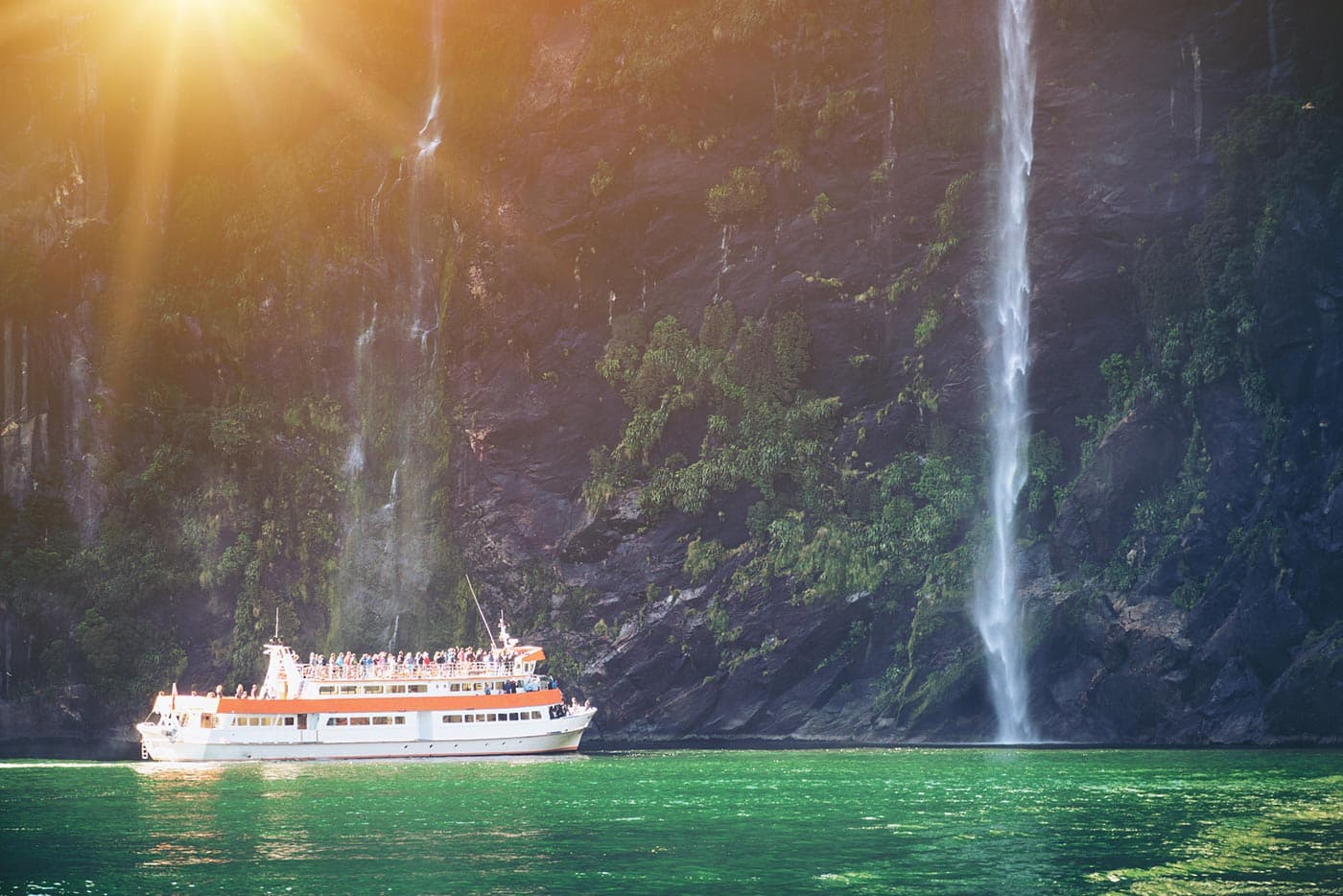
Cruises
Navigate into the heart of the fjord and admire vertiginous waterfalls, imposing cliffs and exceptional marine wildlife. The classic and essential Milford Sound experience.
Discover cruises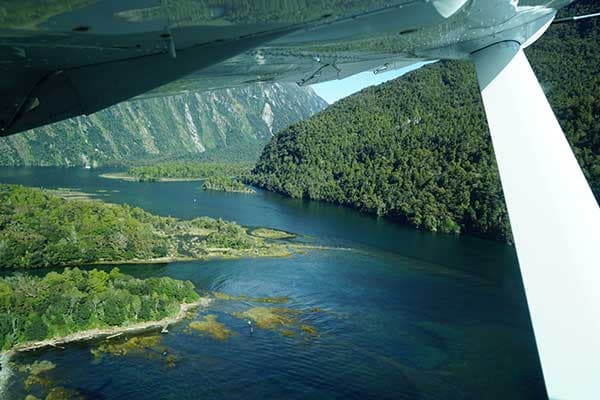
Scenic Flights
Take to the skies by helicopter or small plane for a breathtaking aerial perspective. Discover the immensity and beauty of the fjord from above.
Explore scenic flights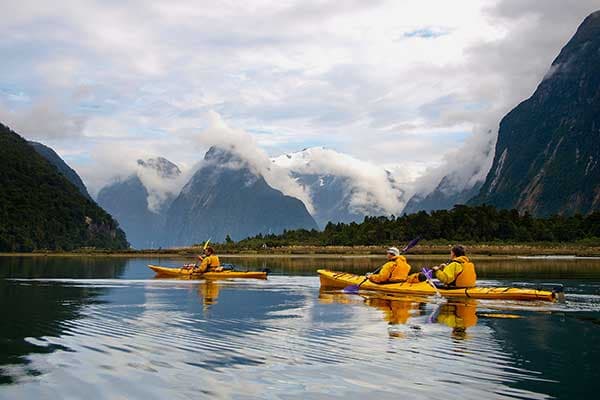
Kayaking
Paddle through the calm waters of the fjord for an intimate experience with nature. Get close to waterfalls and feel the absolute serenity of these magical places.
Discover kayaking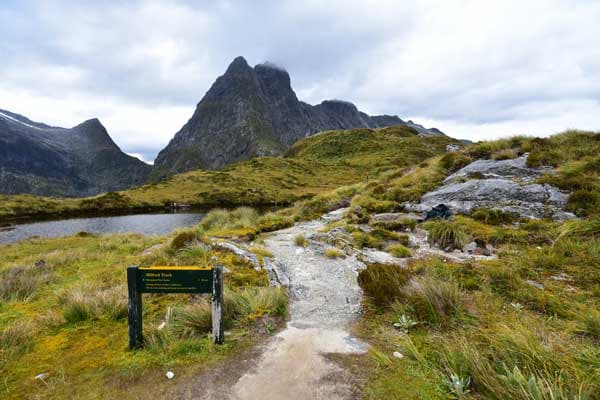
Hiking
Explore legendary trails like the Milford Track. Immerse yourself in the wilderness and discover breathtaking landscapes at your own pace.
Explore hikingPlan your visit
Essential information to make the most of your Milford Sound experience
Accommodation
Accommodation options are limited. Book in advance to guarantee your stay.
Where to stay at Milford Sound?Parking
Parking options are limited. Plan to arrive early to secure your spot.
Where to park at Milford Sound?The legendary Milford Track
Nicknamed "the finest walk in the world", the Milford Track is one of New Zealand's most prestigious Great Walks. This 53.5km hike through Fiordland National Park takes you from the shores of Lake Te Anau to Milford Sound, crossing glacial valleys, temperate rainforests and breathtaking alpine landscapes.

Milford Sound – One of the Most Beautiful Fjords in the World ?
Milford Sound is not one of New Zealand’s most famous destinations by chance. This breathtaking fjord — often described as one of the most beautiful in the world — is well worth the journey. The experience begins long before you reach it, as soon as you arrive in the Te Anau region. The road leading to Milford Sound, the legendary Milford Road, is itself one of the most scenic drives on the planet.
Don’t underestimate the travel time from Te Anau to Milford Sound: while the drive only takes around 1 hour 45 minutes without stops, you’ll want to pull over many times to admire waterfalls, viewpoints, and mirror-like lakes along the way.
Once you arrive at Milford Sound, you’ll be rewarded with a spectacular landscape — untouched, wild, and seemingly straight out of a movie. Towering cliffs rise dramatically from the dark waters, carved by ancient glaciers over millions of years.
Milford Sound is especially famous for its impressive scale: peaks soar up to 1,600 meters above sea level, the fjord plunges over 400 meters deep, and its powerful waterfalls can reach more than 150 meters high.
Add to that lush rainforest, ever-changing light, and incredible wildlife — dolphins, seals, penguins, and even whales that occasionally pass through the fjord — and you have one of the most extraordinary natural wonders on Earth: Milford Sound.
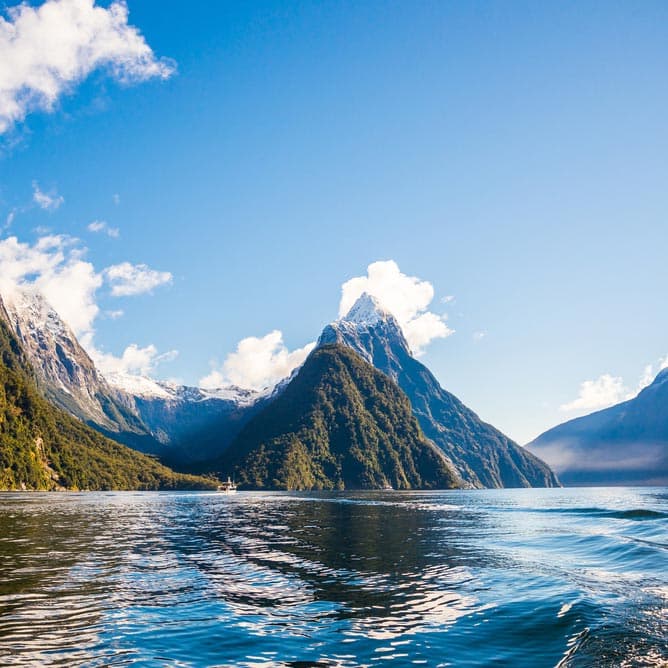
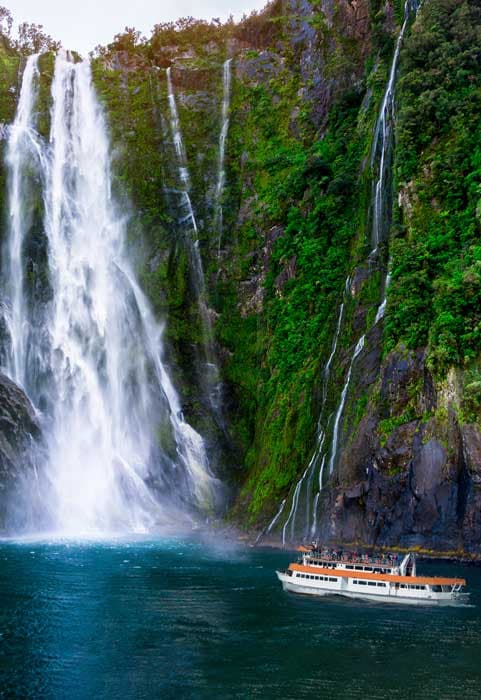
The Origins of Milford Sound
The story of Milford Sound began more than 600 million years ago, when the ancient supercontinent Gondwana split from Pangaea. Over the millions of years that followed, the slow but powerful movement of the tectonic plates gave rise to the dramatic mountain ranges that today stretch from Fiordland National Park to the northern parts of New Zealand’s South Island.
This vast and pristine region, known as Te Wāhipounamu, includes the national parks of Fiordland, Aoraki / Mount Cook, Mount Aspiring, and Westland Tai Poutini. It is now listed as a UNESCO World Heritage Site for its unique landscapes and exceptional ecosystems.
During the last several ice ages, massive glaciers formed throughout this area. As they later melted, ocean levels rose, carving deep valleys and flooding them — creating the spectacular fjords we see today. These glaciers sculpted the rugged cliffs and steep valleys that define Milford Sound, grinding through solid rock and carrying enormous quantities of debris along their path.
You can still see traces of this glacial past along the Milford Road, where huge boulders remain scattered in the landscape. One of the largest accumulations lies near the mouth of the fjord, where sediment deposits have made the water shallower — around 30 metres deep, compared to nearly 400 metres in other parts of the fjord. This natural barrier helps to protect Milford Sound from the rough conditions of the open sea.
Does Milford Sound Have the Wrong Name ?
The short answer is yes. In English, the word “Sound” usually refers to a sea inlet or a narrow passage of water between two landmasses. That’s exactly what early European explorers thought they had discovered when they first arrived at Milford Sound. In reality, however, Milford is not a sound at all — it’s a fjord.
At first glance, the two may look similar, but the difference lies in their geological origins. A sound is formed when the sea floods a valley created by the movement or folding of the Earth’s crust. A fjord, on the other hand, is carved by the erosive power of glaciers.
As ancient glaciers advanced through this region, they sculpted the deep valleys and steep cliffs that make Milford Sound so distinctive today. When the ice finally melted, the rising sea levels filled these valleys, creating the dramatic fjord we see now — a masterpiece shaped by ice, time, and nature.
The Discovery of Milford Sound
The first people to discover Milford Sound were the Māori, around the 11th century. Many Māori legends tell the story of how this spectacular fjord was formed. Several Māori tribes lived in and around the region, fishing in its rich waters and hunting in the surrounding forests. The area was also prized for its pounamu — New Zealand jade or greenstone — a sacred stone of great cultural importance in Māori tradition.
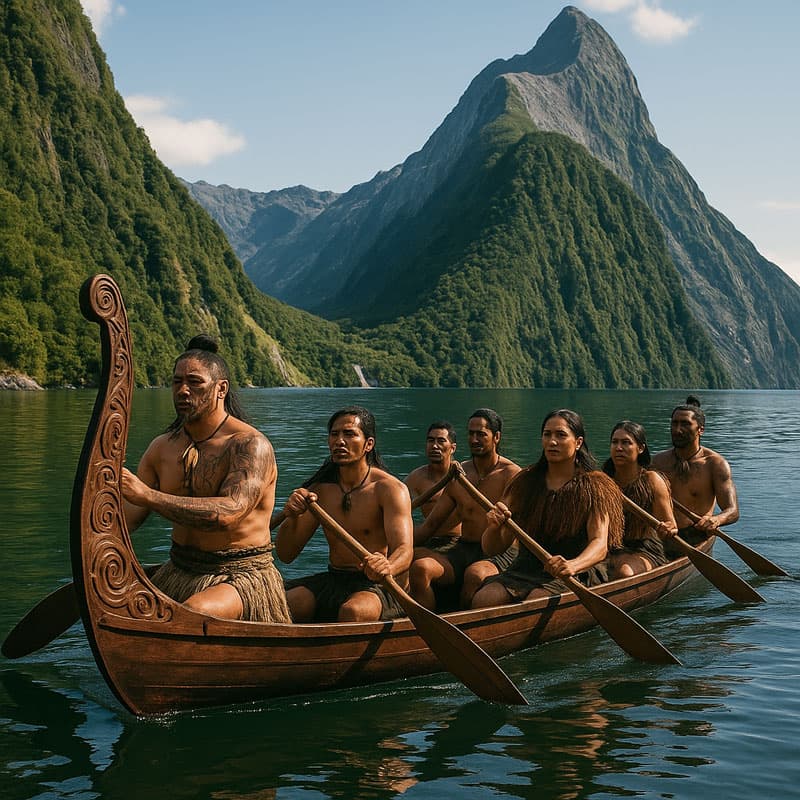
Image generated by artificial intelligence
European explorers reached the fjord much later. While Abel Tasman first sighted New Zealand in 1642 and Captain James Cook charted much of its coastline in 1769, Milford Sound remained unknown to Europeans until 1812, when John Grono stumbled upon it. He named it Milford Haven, after his hometown in Wales. Later, the fjord was renamed Milford Sound by Captain John Lort Stokes.
In 1887, the fjord welcomed its first permanent settler — Donald Sutherland. If that name sounds familiar, it’s because he discovered the magnificent Sutherland Falls, a triple waterfall with a total height of 581 metres, now one of the tallest in New Zealand. Sutherland and his wife later opened the first hotel in the Milford region, which was eventually sold to the government after his death.
The area became more accessible after 1888, when explorers discovered the Mackinnon Pass, but it was not until 1954, with the construction of the Homer Tunnel, that Milford Sound truly opened to the world. This was followed by the building of the Milford Road and the infrastructure that allows visitors to reach the fjord today.
Over the years, Milford Sound has gained worldwide recognition — not only for its breathtaking landscapes but also for its cultural and natural value. It was declared a UNESCO World Heritage Site in 1990 as part of the Te Wāhipounamu region. Even the famous writer Rudyard Kipling once described Milford Sound as “the eighth wonder of the world.”
Frequently Asked Questions
Everything you need to know for your visit to Milford Sound